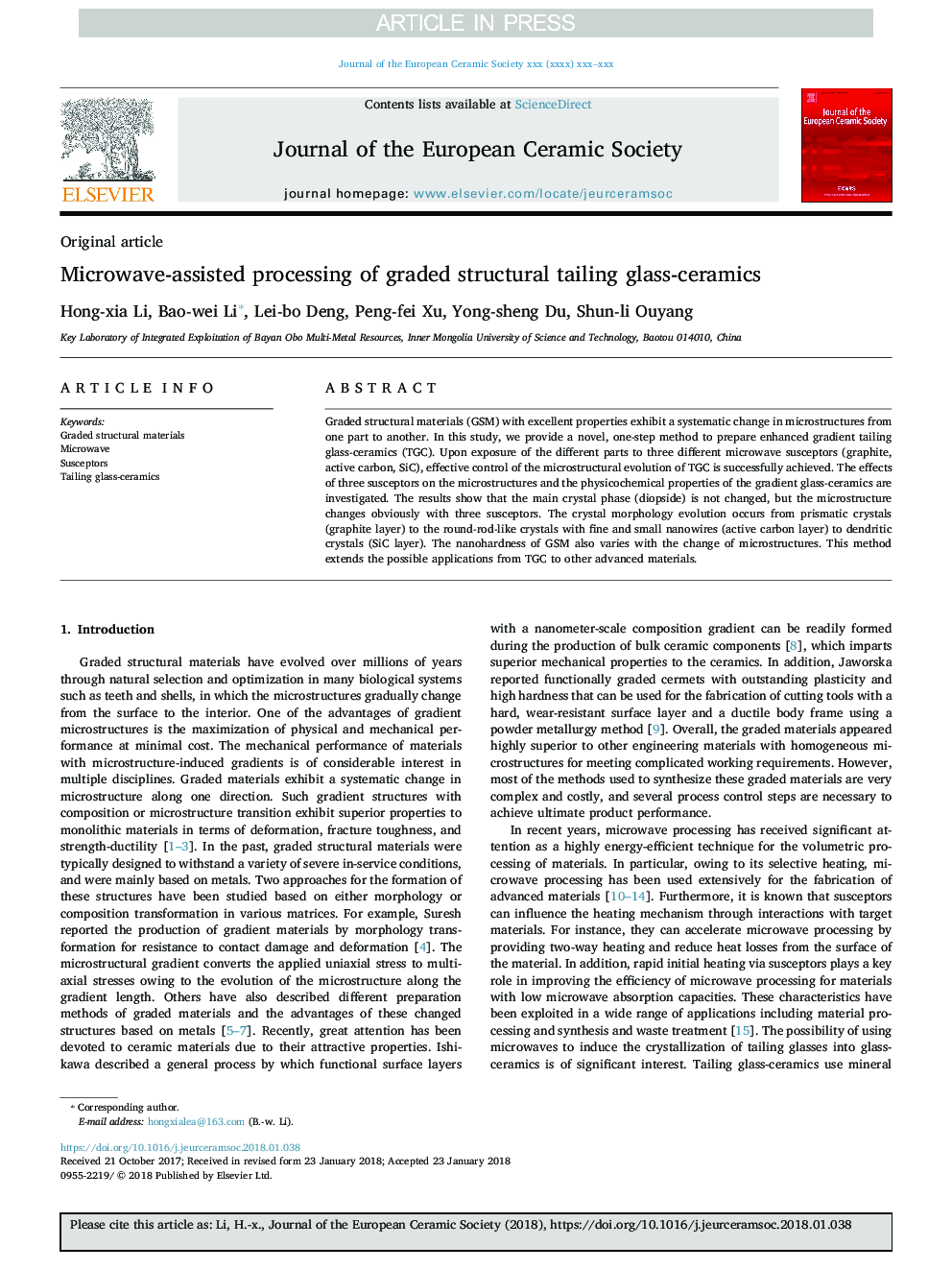| Article ID | Journal | Published Year | Pages | File Type |
|---|---|---|---|---|
| 7898406 | Journal of the European Ceramic Society | 2018 | 7 Pages |
Abstract
Graded structural materials (GSM) with excellent properties exhibit a systematic change in microstructures from one part to another. In this study, we provide a novel, one-step method to prepare enhanced gradient tailing glass-ceramics (TGC). Upon exposure of the different parts to three different microwave susceptors (graphite, active carbon, SiC), effective control of the microstructural evolution of TGC is successfully achieved. The effects of three susceptors on the microstructures and the physicochemical properties of the gradient glass-ceramics are investigated. The results show that the main crystal phase (diopside) is not changed, but the microstructure changes obviously with three susceptors. The crystal morphology evolution occurs from prismatic crystals (graphite layer) to the round-rod-like crystals with fine and small nanowires (active carbon layer) to dendritic crystals (SiC layer). The nanohardness of GSM also varies with the change of microstructures. This method extends the possible applications from TGC to other advanced materials.
Keywords
Related Topics
Physical Sciences and Engineering
Materials Science
Ceramics and Composites
Authors
Hong-xia Li, Bao-wei Li, Lei-bo Deng, Peng-fei Xu, Yong-sheng Du, Shun-li Ouyang,
